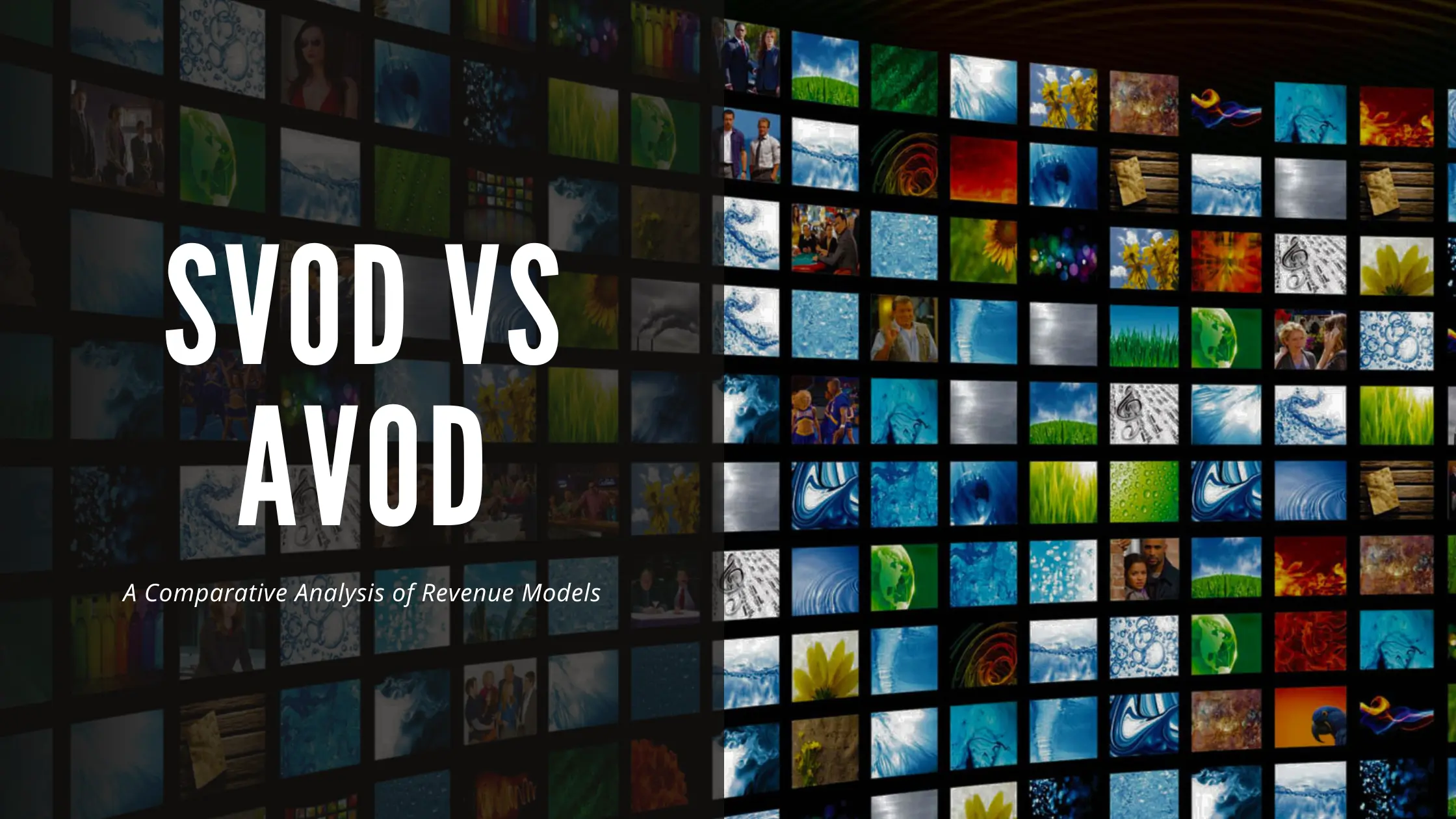SVOD vs AVOD: A Comparative Analysis of Revenue Models

Ad-supported Video on Demand (AVOD) and Subscription Video on Demand (SVOD) are two prominent models for delivering digital video content to viewers. Each model has advantages and considerations, catering to different audience preferences and revenue strategies. Let's delve into a comprehensive comparative analysis of AVOD vs. SVOD:
Revenue Model
AVOD
Ad-supported Video on Demand platforms generate revenue primarily through advertising. Advertisers pay to display ads to viewers, and revenue is typically based on factors such as ad impressions, click-through rates, and other engagement metrics. AVOD platforms offer free access to content for viewers, making revenue generation dependent on advertising effectiveness and audience reach.
SVOD
Subscription Video on Demand platforms generate revenue through subscription fees. Subscribers pay a recurring payment to access a library of content without ads. Revenue is predictable and recurring, providing a stable income stream for content creators and platform operators. SVOD platforms may offer additional revenue streams such as licensing deals and merchandising.
Viewer Experience
AVOD
AVOD platforms offer free access to content, but viewers may experience interruptions in playback due to ads. Ad-supported viewing experiences can be less immersive and may disrupt the flow of content. However, AVOD platforms often provide targeted advertising tailored to viewer interests, enhancing engagement and relevance.
SVOD
SVOD platforms offer ad-free viewing experiences, allowing subscribers to consume uninterrupted content. Subscribers can access a curated library of content tailored to their interests and preferences. SVOD platforms focus on providing high-quality content and personalized recommendations to keep subscribers engaged and satisfied.
Content Library
AVOD
AVOD platforms typically offer a wide range of content, including user-generated videos, licensed content, and original programming. The content library may vary in quality and relevance, with some platforms prioritizing quantity over quality. AVOD platforms often rely on licensed content to attract viewers and supplement their original programming.
SVOD
SVOD platforms offer a curated library of premium content, including movies, TV shows, documentaries, and original series. Subscribers have access to diverse content across various genres and categories. SVOD platforms invest heavily in content acquisition and production to differentiate themselves and attract subscribers.
Monetization Potential
AVOD
AVOD platforms offer potential for scalable revenue growth through advertising, as revenue is directly tied to audience size and engagement. Advertisers are willing to pay premium rates to reach a large and engaged audience, driving revenue for AVOD platforms. However, revenue potential may be impacted by factors such as ad-blockers, ad fraud, and market saturation.
SVOD
SVOD platforms offer predictable and recurring revenue streams through subscription fees paid by subscribers. Revenue is less dependent on advertising and more on subscriber growth and retention. SVOD platforms can achieve high customer lifetime value (CLV) by attracting and retaining loyal subscribers willing to pay for premium content and exclusive access.
Market Positioning
AVOD
AVOD platforms compete for viewership and advertising dollars in a crowded marketplace with numerous competitors. Success in the AVOD space depends on content quality, audience engagement, and advertising effectiveness. AVOD platforms may target a broad audience or niche segments to differentiate themselves and attract advertisers.
SVOD
SVOD platforms compete for subscribers in a highly competitive market dominated by established players such as Netflix, Amazon Prime Video, and Disney+. Success in the SVOD space depends on content quality, brand reputation, and subscriber experience. To differentiate themselves and attract subscribers, SVOD platforms may focus on original content, exclusive licensing deals, or niche audiences.
Content Acquisition and Production
AVOD
AVOD platforms may license content from third-party providers or produce original programming in-house. Content acquisition costs may vary depending on exclusivity, popularity, and licensing terms. AVOD platforms may prioritize content that attracts advertisers and drives engagement, balancing quantity and quality to maintain a diverse content library.
SVOD
SVOD platforms invest heavily in content acquisition and production to differentiate themselves and attract subscribers. SVOD platforms may spend billions annually on licensing deals and original content production. Original programming is a crucial differentiator for SVOD platforms, allowing them to offer exclusive content unavailable elsewhere.
Subscriber Acquisition and Retention
AVOD
AVOD platforms focus on attracting and retaining viewers through content discovery, engagement, and advertising effectiveness. Viewers may be less committed to a specific platform due to the availability of free content across multiple platforms. AVOD platforms may leverage data and analytics to optimize audience targeting or content recommendations.
SVOD
SVOD platforms focus on acquiring and retaining subscribers through content quality, exclusivity, and subscriber experience. Subscribers are more committed to a specific platform due to the investment in subscription fees and access to exclusive content. To enhance retention, SVOD platforms may invest in personalized recommendations, content discovery features, and subscriber perks.
In conclusion, AVOD and SVOD models offer distinct revenue models, viewer experiences, content libraries, monetization potentials, market positioning, content acquisition strategies, and subscriber acquisition and retention strategies.
The choice between AVOD and SVOD depends on content type, audience preferences, revenue goals, and distribution strategy. While AVOD platforms may offer scalable revenue growth through advertising, SVOD platforms provide predictable and recurring revenue streams through subscription fees. Ultimately, the best model will depend on your specific objectives and the needs of your audience.
